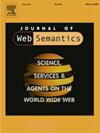关于大型语言模型答案的法律含义:一种快速的工程方法和利用知识图的观点
IF 3.1
3区 计算机科学
Q3 COMPUTER SCIENCE, ARTIFICIAL INTELLIGENCE
引用次数: 0
摘要
随着最近大型语言模型(llm)的流行,用户盲目信任响应中的信息的风险正在上升。然而,在某些情况下,法学硕士建议的行动可能会产生潜在的法律影响,这可能会使用户处于危险之中。我们对多个现有法学硕士进行了实证分析,显示了问题的紧迫性。因此,我们提出了第一个短期解决方案,包括通过快速工程隔离这些法律问题的方法。我们证明该解决方案能够遏制与法律影响相关的一些风险,尽管如此,我们也强调了一些局限性。因此,我们认为需要额外的知识密集型资源,特别是知识图谱来充分解决这些限制。为此,我们提出了我们的建议,旨在设计和开发一个由法律知识图(KG)驱动的解决方案,除了捕获和提醒用户法学硕士答案可能产生的法律含义外,还能够通过提供相关法律的引用为他们提供实际证据。最后,我们简要讨论了构建一个全面的法律知识图谱可能需要解决的问题本文章由计算机程序翻译,如有差异,请以英文原文为准。
On the legal implications of Large Language Model answers: A prompt engineering approach and a view beyond by exploiting Knowledge Graphs
With the recent surge in popularity of Large Language Models (LLMs), there is the rising risk of users blindly trusting the information in the response. Nevertheless, there are cases where the LLM recommends actions that have potential legal implications and this may put the user in danger. We provide an empirical analysis on multiple existing LLMs showing the urgency of the problem. Hence, we propose a first short-term solution, consisting in an approach for isolating these legal issues through prompt engineering. We prove that this solution is able to stem some risks related to legal implications, nonetheless we also highlight some limitations. Hence, we argue on the need for additional knowledge-intensive resources and specifically Knowledge Graphs for fully solving these limitations. For the purpose, we draw our proposal aiming at designing and developing a solution powered by a legal Knowledge Graph (KG) that, besides capturing and alerting the user on possible legal implications coming from the LLM answers, is also able to provide actual evidence for them by supplying citations of the interested laws. We conclude with a brief discussion on the issues that may be needed to solve for building a comprehensive legal Knowledge Graph
求助全文
通过发布文献求助,成功后即可免费获取论文全文。
去求助
来源期刊

Journal of Web Semantics
工程技术-计算机:人工智能
CiteScore
6.20
自引率
12.00%
发文量
22
审稿时长
14.6 weeks
期刊介绍:
The Journal of Web Semantics is an interdisciplinary journal based on research and applications of various subject areas that contribute to the development of a knowledge-intensive and intelligent service Web. These areas include: knowledge technologies, ontology, agents, databases and the semantic grid, obviously disciplines like information retrieval, language technology, human-computer interaction and knowledge discovery are of major relevance as well. All aspects of the Semantic Web development are covered. The publication of large-scale experiments and their analysis is also encouraged to clearly illustrate scenarios and methods that introduce semantics into existing Web interfaces, contents and services. The journal emphasizes the publication of papers that combine theories, methods and experiments from different subject areas in order to deliver innovative semantic methods and applications.
 求助内容:
求助内容: 应助结果提醒方式:
应助结果提醒方式:


